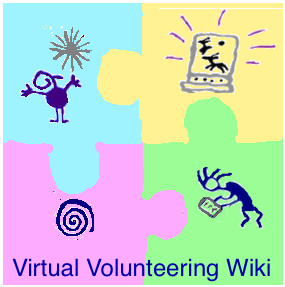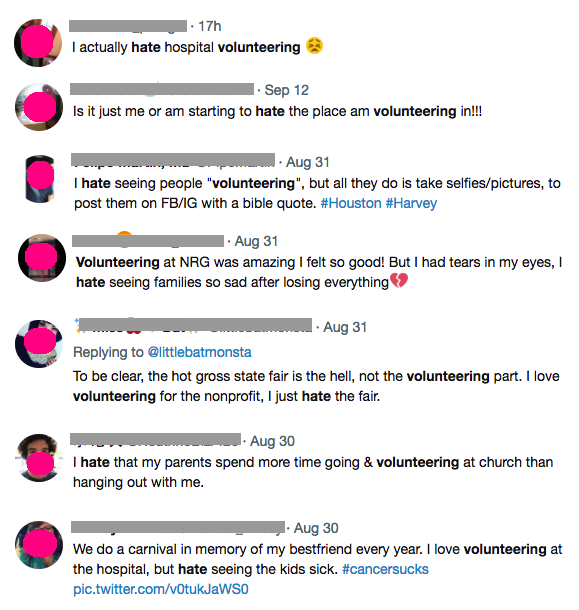 One of the most under-utilized resources for nonprofits is university students who want (and need) a high-responsibility work experience in association with whatever degree they are studying. There are business management, marketing, human resources management, accounting and other types of students who have the time, skills and mandate to work at a nonprofit anywhere from a month to four months, often for an entire university semester, but they struggle to find placements.
One of the most under-utilized resources for nonprofits is university students who want (and need) a high-responsibility work experience in association with whatever degree they are studying. There are business management, marketing, human resources management, accounting and other types of students who have the time, skills and mandate to work at a nonprofit anywhere from a month to four months, often for an entire university semester, but they struggle to find placements.
Your organization should regularly brainstorm what such an intern could do at your organization. Here are some of my ideas, which skew heavily to marketing and public relations, per my own work:
- explore, compile and index a photo and video archive for your organization
- develop an online archive of photos, with proper keywords and descriptions, at Flickr or another online photo archive
- explore and compile your organization’s FAQs
- survey participants in an event or program about their experience. This is one of my very favorite assignments for an intern, because it’s something I really need done and, often, the targets of the survey are more likely to speak freely with a university student than me (they don’t want to hurt my feelings).
- review past surveys looking for pull quotes specifically for grant applications and marketing materials
- explore, compile and index a paper archive of publications your organization has produced over the years
- design a brochure, newsletter, or other publication
- review your web site for ways it could be more accessible, and implement at least some of the recommendations (replacing all “click here” and “read more” links with descriptive links instead, adding in alt tags for photos, making sure every page has a title, etc.)
- creating a more robust section of your web site regarding volunteering, including an online version of your volunteer application, a list of what volunteers do at your organization, your volunteer policies, etc.
- compile and index an archive of press coverage about your organization or a particular program, since your organization launched or for just a set period
- research and compile a list of reporters at area media outlets who have written or produced stories about a particular topic and, therefore, might be interested in writing or producing a story about your organization
- manage an online community your organization hosts, helping with technical support, answering questions (as appropriate) and bringing urgent issues to the attention of the appropriate person (but remember that at least one regular staff member should still be reading the group regularly and responding)
- help at an event, such as at the registration table
- populate Twitter lists
- transcribe/caption your YouTube videos or podcasts
- be your official photographer/videographer at various activities and events, and then splicing together the material into a promotional video (remind them to use copyright-free music if they decide to use music)
- create a display for your lobby or front of office about a program, an event, a particular subject your nonprofit addresses, etc.
- research public outdoor events in your area – dates, times, places – where your nonprofit could have an information table or booth
- researching and compiling a list of commercial kitchens in a town or neighborhood that your organization might be able to use for an event (at senior centers, churches or other communities of faith, cultural centers, etc.), and profiling each in terms of costs, parking, access to public transit, accessibility, etc.
What I won’t put an intern in charge of is social media. This is a high-profit interactive public task that should always be managed by someone permanently at your organization. It’s too important of a role to leave to a temporary staff person, whether intern or consultant.
Whether paid or unpaid, an internship at a nonprofit or government agency, in my opinion, should have these characteristics:
- It should give the intern an opportunity coordinate, even direct, a project, one he or she can take credit for directing or coordinating.
- It should give the intern an opportunity to suggest, perhaps even formally design, approaches and solutions.
- It should include the intern attending staff meetings – and that includes staff meetings outside of the department where the intern will be working.
If it’s an unpaid internship, it also needs to be 20 hours or less and be as flexible as possible, since the intern will probably have a paid job to earn income some he or she can participate in this internship. That means some tasks need to be able to be done in the evenings, on weekends, and remotely from the workplace. My thoughts on the ethics of not paying interns can be found here.
Remember that, at the end of such an internship, you need to talk with the intern about what they learned, what they accomplished, and how the internship might affect their future studies or career. Otherwise, you are ignoring the learning experience that is supposed to be at the heart of an internship.
- Nonprofits & NGOs: Get to Know a University
- Why Should the Poor Volunteer? It’s Time To Re-Think the Answer
- Resources re: labor laws and volunteering
- Make volunteering transformative, not about # of hours
- UN Agencies: Defend your “internships”
- Fight against unpaid internships will hurt volunteering
- Advice for unpaid interns to sue for back pay
- It’s real: the unpaid internships & volunteers controversy
- EU agencies exploiting interns?
- When to NOT pay interns, redux
- Pizzeria tries to recruit unpaid interns, feels Internet’s wrath
- Do NOT say “Need to Cut Costs? Involve Volunteers!”
- Value of Volunteers – Still Beating the Drum
- Another anti-volunteer union
- Volunteers are suing!
- Criticism Continues for UK Government Talk Re Volunteers
- International Association of Fire Fighters is anti-volunteer







